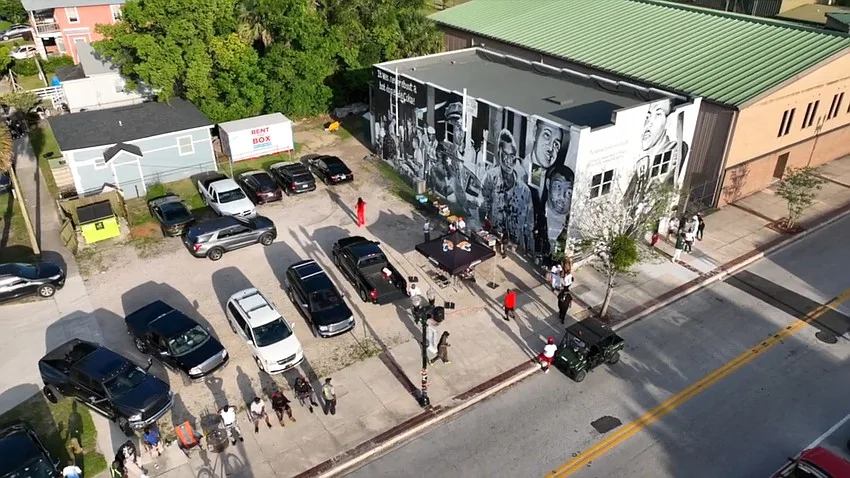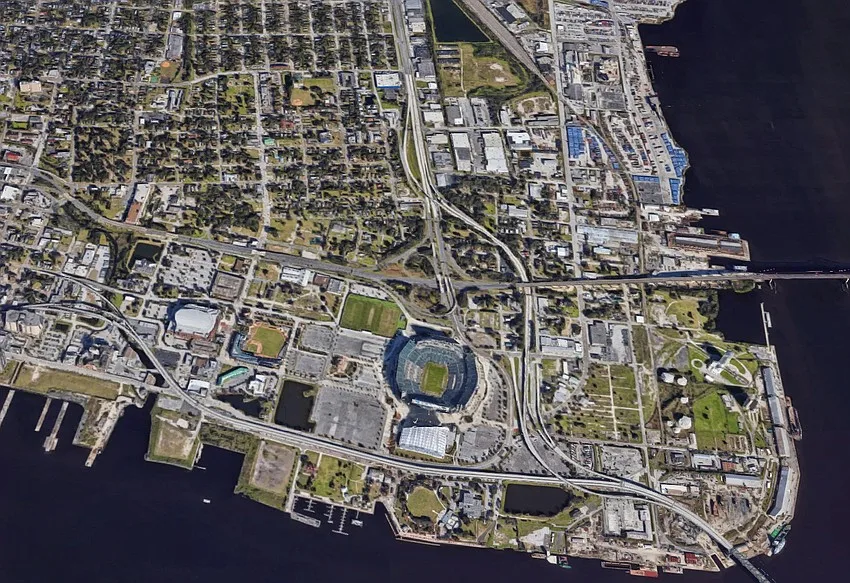LIFT JAX announced Nov. 27 that Jacksonville’s Eastside has been accepted to the National Register of Historic Places, the official list of places worthy of preservation across the United States.
“This recognition will play an integral role in preserving the neighborhood for years to come,” the release said.
The city Eastside Historic District map shows it stretching from the Arlington Expressway north to Seventh Street and from Cemetery Street and Palmetto Street east to Martin Luther King Jr. Parkway.
A LIFT JAX video about the Eastside says the area was created in 1887 with the annexation of three communities into Jacksonville — Oakland, East Jacksonville and Fairfield. A historic map of the area shows it from about the Jacksonville Sheriff’s Office headquarters east to Talleyrand and north from the St. Johns River to about First Street. This would include Sports and Entertainment District and EverBank Stadium.

A LIFT JAX video about the Eastside says the area was created in 1887 with the annexation of three communities into Jacksonville — Oakland, East Jacksonville and Fairfield.

The city Eastside Historic District stretches from the Arlington Expressway north to Seventh Street and from Cemetery Street and Palmetto Street east to Martin Luther King Jr. Parkway.
LIFT JAX, a nonprofit organization working to eradicate poverty in the Eastside, said that during the nomination it confirmed more than 675 “contributing resources,” making it one of the most densely populated historic areas in the state.
The release said that dating back to the end of the Civil War, the Eastside neighborhood is one of Jacksonville’s last cohesive urban core communities.
The release said the area has one of Jacksonville’s largest concentrations of historic-age buildings associated with the Gullah Geechee and has ties to historical figures such as Joseph E. Lee, Jacksonville’s first African American lawyer; Asa Philip Randolph, civil rights activist and organizer of the first successful African American labor union; and more.

Joseph E. Lee
“The neighborhood upholds important history and this designation ensures preservation, while also opening the door to new opportunities,” said Travis Williams, vice president of Operations and Impact at LIFT JAX and a fourth-generation Eastsider.
The Nov. 27 release said nonprofit organizations, like LIFT JAX and the Historic Eastside Community Development Corporation, are dedicated to supporting the vision of resident leaders, and being on the National Register will further their efforts.
“With initiatives to support community wellness, long-term financial vitality, cradle-to-career education and recent advancements in fostering reliable, safe mixed-income housing, the future is bright OutEast,” it said. OutEast is another name for the area.
The release said that each year, the Historic Preservation Fund allocates $150 million in grants.
“Now, as part of the National Register, leaders in the Eastside can apply for funding opportunities to complete revitalization projects,” the release said.

An image of the Eastside area from a video about the community by LIFT JAX.
The Register also allows the Eastside to be a part of a searchable database and network of other historic property owners and areas.
The Jacksonville Jaguars Foundation provided funding to prepare and submit the application to the National Register of Historic Places. LIFT JAX worked with consulting firm PaleoWest (now called Chronicle Heritage), to bring together the application, which included a survey of all structures in the neighborhood and study of its history.

An aerial view of the Eastside Brotherhood Club at 915 A Philip Randolph Blvd. in the Eastside area of Jacksonville north of the Downtown fairgrounds.
According to the release, the seeds for LIFT JAX were planted in 2017 when Jacksonville business and community leaders met to “plot a path to eliminate poverty in the city.”
LIFT JAX’s flagship strategy is to implement the Purpose Built Communities model in Jacksonville’s Eastside.
The release said the nationally recognized model has transformed poverty-stricken areas across the country and is based on a coordinated, holistic approach to revitalization, including high-quality, mixed-income housing; cradle-to-career education; community wellness; and long-term financial vitality for residents.
LIFT JAX said it is working with Eastside residents directly to identify pressing community needs and bring together partners to address them.



